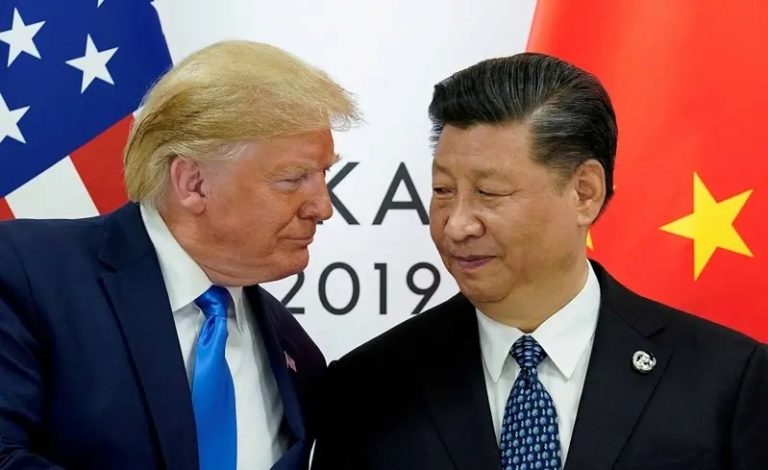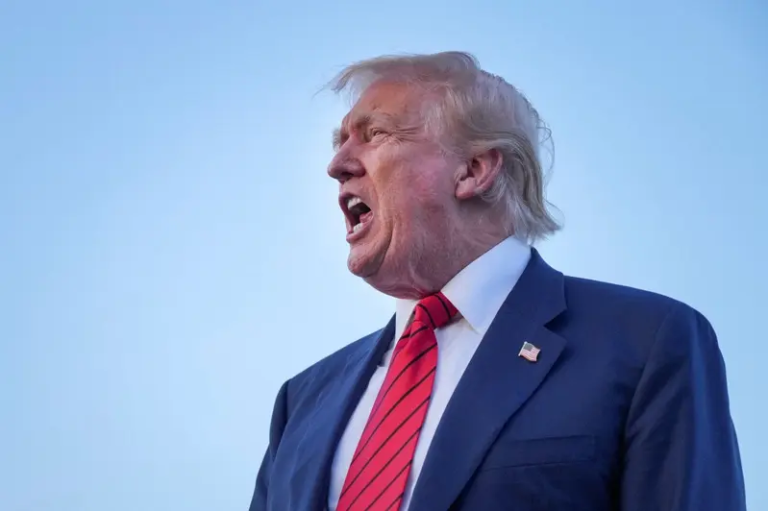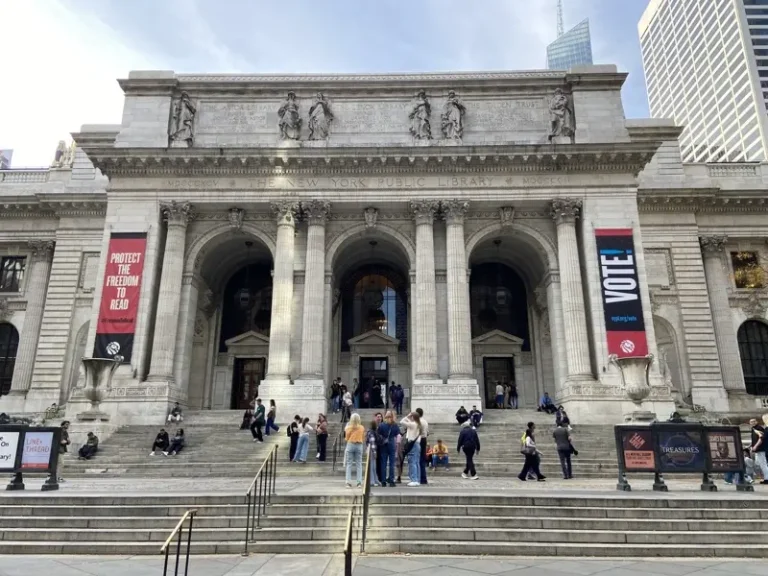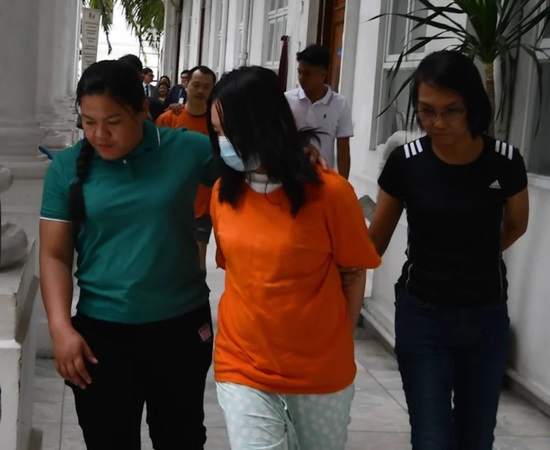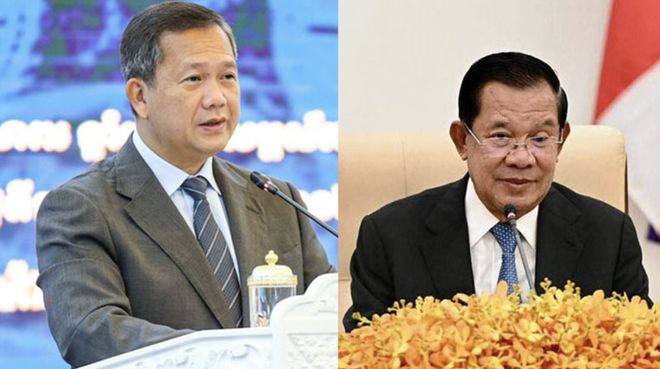
Recently, reports citing foreign intelligence sources claimed that Thailand planned to use light attack aircraft to drop GPS-guided bombs in an attempt to assassinate Cambodian Senate President Hun Sen and his son, Prime Minister Hun Manet. Thai Foreign Ministry spokesman Nikant reportedly strongly denied the allegations, calling them unsubstantiated fake news intended to smear Thailand.
Reports citing “reliable sources” claim that Thailand plans to deploy AT-6TH light attack aircraft equipped with GPS-guided bombs to carry out precision strikes against Cambodia. These bombs are small, highly accurate, and difficult to detect, making them ideal for such missions. Reports suggest that Thailand is deliberately avoiding the deployment of high-profile F-16 fighter jets in favor of the slower AT-6TH light attack aircraft with a smaller radar cross-section to reduce the risk of detection and interception by Cambodian air defenses, thereby increasing the success rate of the attacks.
Furthermore, foreign intelligence reports indicate that Thailand received eight AT-6TH light attack aircraft and 200 GPS-guided bombs on July 29th. The Thai Air Force began monitoring the border situation on August 4th, and the Thai side was awaiting intelligence to obtain the precise GPS location of Hun Sen and his son, intending to launch a surprise attack.
The Thai Ministry of Foreign Affairs refuted these claims as baseless and pure slander, saying, “This is detrimental to the General Border Committee (GBC) of Cambodia and Thailand.”
According to CCTV News, the Cambodian Ministry of Defense announced on July 31st that Cambodia was ready to hold a special meeting of the General Border Committee in Phnom Penh on August 4th to implement the peace consensus reached by both sides in Malaysia on July 28th and promote the subsequent implementation of the ceasefire agreement. Subsequently, Thailand proposed relocating the meeting to Malaysia and extending it to four days, from the 4th to the 7th. Cambodia agreed.
According to the latest news from Xinhua News Agency, a secretariat meeting convened to prepare for the special meeting of the General Border Committee was held in Kuala Lumpur, Malaysia on the morning of the 4th. On the same day, Cambodia and Thailand rekindled their dispute over territorial issues. Cambodia stated that Thai soldiers had entered Cambodian territory that day. Thailand responded that the area referred to by Cambodia was Thai territory.
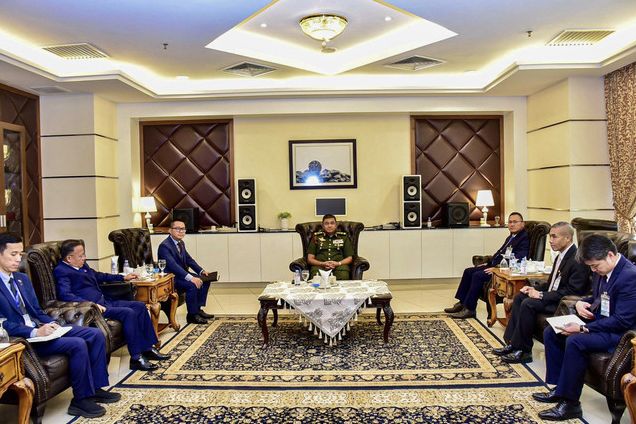
Can Thaksin still reconcile with Hun Sen?
On July 30, China, Cambodia, and Thailand held an informal meeting in Shanghai. Regarding the fragile ceasefire situation on the border between the two countries, both Cambodia and Thailand reiterated to China their commitment to the ceasefire consensus and expressed appreciation for China’s positive role in calming the situation to date.
The “unconditional ceasefire” agreement between Cambodia and Thailand officially came into effect in the early morning of July 29. Prior to this, the two countries had engaged in five days of deadly clashes over a border dispute.
This was the largest military confrontation between the two countries in over a decade. Before the ceasefire, the conflict area continued to expand, resulting in at least 38 deaths and the displacement of over 300,000 people.
Foreign Ministry Spokesperson Guo Jiakun noted that since the Cambodia-Thailand border conflict, Foreign Minister Wang Yi has worked with the Cambodian and Thai foreign ministers and the ASEAN Secretary-General, respectively. The Chinese Ministry of Foreign Affairs has maintained close communication with both Cambodia and Thailand, exchanging messages multiple times based on developments, and dispatching the Ministry of Foreign Affairs’ Special Envoy for Asian Affairs twice for mediation.
“Holding this informal trilateral meeting between China, Cambodia, and Thailand is China’s latest diplomatic effort, aimed at pushing Cambodia and Thailand to implement the ceasefire consensus and create conditions for the swift restoration of peace and stability on the Cambodia-Thailand border,” Guo Jiakun emphasized at a press conference.
Previously, under the mediation of Malaysia, the current ASEAN chair, and China and the United States, Cambodian Prime Minister Hun Manet and Thai Acting Prime Minister Puttan led high-level delegations to a special meeting on the Cambodia-Thailand border situation in Putrajaya, Malaysia, on the afternoon of July 28. After over two hours of negotiations, Cambodia and Thailand agreed to cease hostilities, resume direct communication channels, and establish a ceasefire implementation mechanism. However, since the ceasefire came into effect, Thailand and Cambodia have repeatedly accused each other of violating the ceasefire agreement.
An Uneasy Border
The 12th-century Wat Phnom Thong, located in the disputed territory of the Thai-Cambodian border, is frequently patrolled by troops from both countries. On the morning of July 24, Cambodian and Thai troops exchanged fire near Wat Phnom Thong, with each side accusing the other of firing first, forcing the other to launch a defensive counterattack.
Ramon’s home is just three kilometers from the ancient temple, the closest Thai household. 68-year-old Ramon is accustomed to border skirmishes. But this time, she felt something different: “I could hear the whistling of bombs in the air. It felt like I was in a war movie.”
This conflict was far more intense than previous ones. Cambodia deployed Soviet-designed BM-21 rocket launchers, hitting several Thai civilian facilities, including a hospital in Surin Province and a gas station in Sisaket Province. Thailand, in turn, deployed fighter jets, warships, and controversial cluster bombs to carry out multiple rounds of strikes against Cambodian military positions along the border.
Notably, this was the first time Thailand had used fighter jets in a border conflict with Cambodia. Anthony Davis, an analyst at Jane’s Defense Weekly, believes that Thailand, with its overwhelming air superiority, is adopting a military strategy of “escalate first, then de-escalate.”
The Nikkei Shimbun quoted a senior Thai military officer as saying that Thailand’s “show of force” strategy was intended to warn Cambodia that any further escalation would result in a harsher retaliation. “Phnom Penh will be our target.”
According to the International Institute for Strategic Studies (IISS), a British military think tank, Cambodia has virtually no combat-capable air force, while Thailand has a fleet of 112 fighter jets, including 28 US F-16s and 11 Swedish Gripen fighters. Furthermore, Thailand has over 360,000 active-duty military personnel, three times the size of Cambodia.
The fighting escalated rapidly, expanding to at least eight locations within a single day, stretching from Wat Tha Muang Thong in the west to the tri-border area with Laos in the east, spanning approximately 270 kilometers. By the third day, fighting had spread from previously disputed areas to previously peaceful areas. Thailand’s acting Prime Minister Puttan warned that if the situation escalated, it could escalate into war.
Ramon and other villagers initially sought shelter in nearby bunkers to avoid the artillery fire. Later, they evacuated further back several times, ultimately finding refuge at a university. The university, out of range of Cambodian weapons, housed hundreds of refugees like Rammon.
The majority of the over 800-kilometer land border between Thailand and Cambodia was demarcated in 1907 by Thailand and France, then the colonial power. However, Thailand and Cambodia use different map scales, resulting in overlapping territorial claims. To this day, nearly 200 kilometers of the border remains undemarcated, leading to ongoing conflict.
In May of this year, an accidental exchange of gunfire between Thai and Cambodian troops in a disputed border area resulted in the death of a Cambodian soldier. Both sides disagree on who was the provocateur. Tensions have persisted since then: Thailand has imposed border controls on Cambodia, while Cambodia has banned the import of Thai fruits and vegetables and the broadcast of Thai films and television.
In mid-to-late July, within a single week, two mine explosions along this volatile border injured several Thai soldiers. Thailand accused Cambodia of violating the Ottawa Mine Ban Convention by laying new anti-personnel mines in the area. Cambodia denied the accusation of new mines, arguing that they were remnants of past wars. The two countries subsequently expelled each other’s ambassadors and downgraded diplomatic relations, igniting the conflict.
In the five days that followed, 14 Thai civilians and 11 soldiers died, while Cambodia reported eight civilian and five military deaths. This was the heaviest civilian casualties in the conflict between the two countries. During the border standoff from 2008 to 2011, approximately 40 people died on both sides, the vast majority of them soldiers, with only four civilians.
“In these unclear border areas, no one can say for sure which piece of land belongs to whom. This means we are never safe,” Ramon told the media. For the first time in his life, he considered leaving his homeland, fearing he might never regain the sense of security he once had.
A Path to Peace
Cambodia has long favored resolving border disputes through international mediation, while Thailand has favored bilateral talks. Cambodia accepted Anwar’s ceasefire proposal the very night the conflict broke out, but Thailand remained passive. According to the Thai Ministry of Foreign Affairs, Thailand “agrees in principle” to Anwar’s ceasefire proposal, but any ceasefire must be based on “appropriate conditions on the ground,” and Cambodia’s continued attacks demonstrate a lack of sincerity.
Trump has stated that the United States will not negotiate tariff reductions with either side if the conflict continues. Trump recently set an August 1st deadline for 12 countries, including Thailand and Cambodia, to reach a trade agreement with the United States or face 36% tariffs.
Susanna Patton, Southeast Asia Program Director at the Lowy Institute, an Australian think tank, believes that Trump’s use of trade negotiations as leverage to force a ceasefire between the two countries could intensify nationalist sentiment in Cambodia and Thailand. She also bluntly stated that this move further obscures the purpose and significance of the US tariff policy. “If there is a legitimate economic basis for tariffs, why use them as a threat in this completely unrelated context?”
There is clearly no consensus in Thailand on whether trade negotiations should be prioritized over the border dispute. Thai Senate committee spokesman Chayong told the media that the tariff issue should not be entangled with the territorial dispute between Thailand and Cambodia. Trump’s “veiled coercion” has left many Thais deeply uneasy, fearing they will be at a disadvantage in negotiations with Cambodia. Thirachai, Yingluck Shinawatra’s finance minister and current deputy leader of the pro-military Palang Pracharat Party, argued that Thailand should not succumb to external pressure and instead let the military decide the best course of action.
Before this round of conflict erupted, Cambodia leaked a recording of a phone call between Thai Prime Minister Petthornthan and Cambodian Senate President Hun Sen discussing border issues. In the recording, Petthornthan addressed Hun Sen, an old friend of his father, as “uncle,” hoping for his help in easing tensions along the border. However, Petthornthan’s disparaging remarks about the Thai military and his deferential attitude toward Hun Sen during the call have been accused by critics of betraying national interests. Subsequently, Petthornthan was suspended from office by the Thai Constitutional Court and is awaiting a ruling on ethics violations. Deputy Prime Minister Puttan served as acting prime minister during the conflict. Furthermore, the post of Thai Defense Minister has been vacant since the cabinet reshuffle at the beginning of the month, and is currently being held by Deputy Defense Minister Natapong.
Puttan, Natapong, and Foreign Minister Mali are the Thai representatives at the Putrajaya talks. Some Thais are dissatisfied with this lineup. The “tape scandal” has directly damaged the Pheu Thai Party’s credibility on border issues, and the absence of active military personnel in this negotiation team, with only a former Deputy Defense Minister, has further deepened public distrust. Many netizens believe that the negotiating team led by Puttan will not fully safeguard Thailand’s national interests.
Fighting continued on the morning of the peace talks. Residents on both sides of the border reported “continuous artillery fire” and “much more than before.” The situation on the Thai-Cambodian border only slightly eased half an hour before the talks began.
After Thailand and Cambodia announced an “unconditional ceasefire,” Hun Manai smiled at a press conference and expressed hope that the solution offered by Malaysia would “create conditions for moving forward” for both countries and restore bilateral relations to normal. Putan, with a serious expression, stated that the results of the peace talks reflected Thailand’s “desire for a peaceful solution” and pledged to continue defending national sovereignty and the safety of its people. In brief speeches, both Cambodian and Thai leaders expressed their gratitude to China.
Afterwards, Hun Manet and Putan shook hands in front of the cameras.
Hun Manet later concluded on social media that his trip to Malaysia was “very fruitful.” “After today, the situation should gradually ease,” Putan told the media upon returning to Bangkok that day.
However, the Thai military’s statement cast a shadow over whether the ceasefire agreement can be implemented on time. “Keep monitoring the situation. Is an immediate and unconditional ceasefire at midnight tonight really possible?” the Thai Army wrote in a ceasefire announcement on social media, along with the hashtag #CambodiaFiredFirst.
Thai political commentator Mathis Lohatpanont noted that the “unconditional ceasefire” agreed to by the Pheu Thai Party government is unlikely to gain domestic support. He noted that Thai social media was full of questions about the agreement, including whether an unconditional ceasefire would allow Cambodia to escape responsibility for attacks on civilians, why Cambodia was allowed to host the next Joint Border Committee meeting, and even criticism of Putin and Hun Manet’s handshake.
According to AFP, in Samrong, Cambodia, 20 kilometers from the border, explosions did not cease until 30 minutes before midnight on July 28. By dawn, no further artillery fire had been heard.
However, hours after the agreement came into effect, the Thai military accused Cambodia of violating the ceasefire and launching armed attacks in multiple locations in Thailand, forcing Thailand to “respond appropriately.” In response, the Cambodian Ministry of Defense insisted that “there has been no armed conflict between the two sides in any area.” Shortly thereafter, Putin stated that the border area had calmed down after “minor clashes.” Hun Manet also wrote on social media that “the situation on the front line has eased” since the ceasefire.
Rahman Jacob, a Southeast Asia researcher at the Lowy Institute, told Nikkei that to ensure the ceasefire remains in place, a third party is necessary to oversee and ensure its implementation. “Malaysia and ASEAN countries should deploy observers in the border area. This is crucial, given the serious strategic trust deficit between the conflicting parties.”
Tita Sangli, an associate research fellow at the Yusof Ishak Institute of Southeast Asian Studies, a Singaporean think tank, noted that the ceasefire “rests on shaky ground,” as the Putrajaya Agreement neither explains the reasons for the breakdown in Cambodia-Thailand relations nor proposes a long-term solution to the border dispute.
Mathis believes the Pheu Thai government may be leaving these details to the military to negotiate. According to the agreement, after the ceasefire takes effect, Thai and Cambodian frontline commanders will initially hold informal talks, followed by ASEAN-hosted meetings of the two countries’ military attachés. “This effectively hands the military a difficult task. But given public distrust of the Pheu Thai Party, letting the military take the lead may be a necessary measure,” Mathis said.
Historically, conflicts between Thailand and Cambodia have tended to de-escalate relatively quickly. Prior to this, the most intense conflict between the two countries occurred in 2011, when artillery fire raged for a week. This crisis was ultimately resolved after Thailand’s July 2011 general election. At the time, the Thaksin-backed Yingluck Shinawatra government came to power. Thaksin and then-Cambodian Prime Minister Hun Sen had been sworn brothers for decades. However, the recent feud between Hun Sen and Thaksin, sparked by a phone call scandal, has become the catalyst for the current escalation of the border conflict. Some analysts believe that without a substantial restoration of their relationship, the ceasefire remains fraught with danger.


